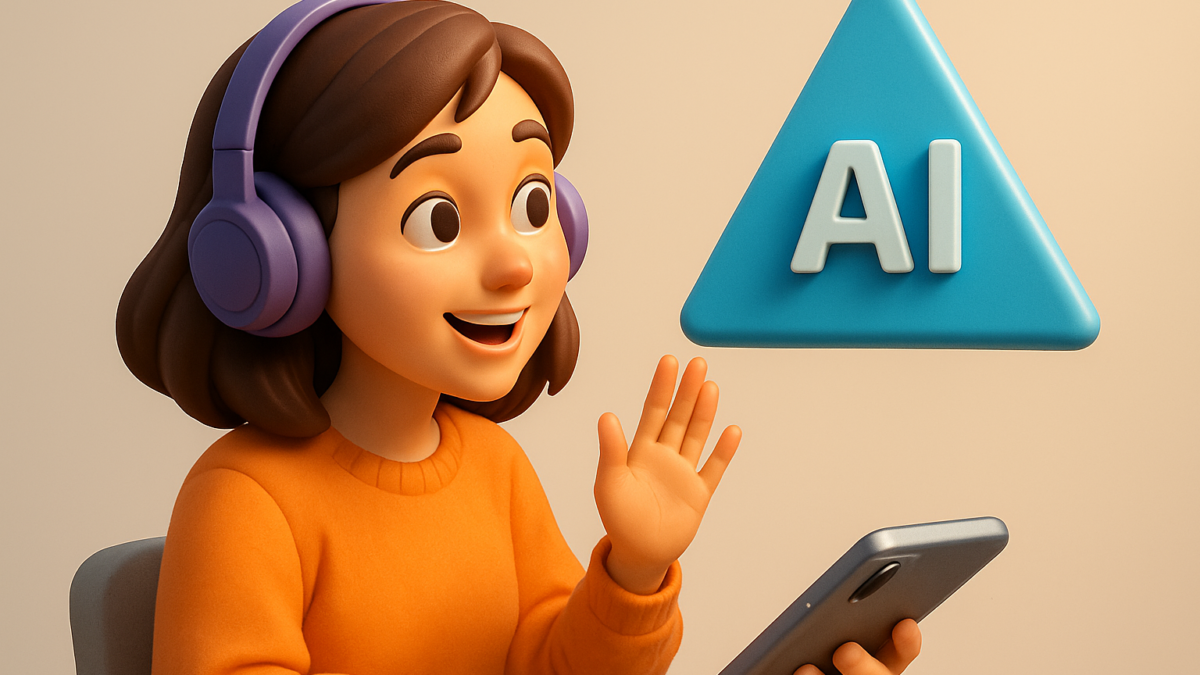The AI Companion Era: Why Everyone Will Have a Digital Best Friend by 2026
Imagine a world where your best friend isn’t human but an intelligent AI who listens, learns, and grows with you.
This isn’t science fiction anymore. The rise of AI companions is redefining emotional intelligence, mental wellness, and even how we communicate.
From Replika to Character.AI, millions worldwide are forming real emotional connections with AI-driven digital friends. By 2026, these companions are expected to become as common as smartphones — personal, empathetic, and always available.
What Is an AI Companion?
An AI companion is an intelligent, conversational system designed to simulate emotional and social interaction.
Unlike traditional chatbots, AI companions use Generative AI and Natural Language Processing (NLP) to adapt to your tone, mood, and interests — creating personalized and emotionally engaging exchanges.
Top examples of AI companions today include:
- Replika AI: A personal AI friend that can hold deep emotional conversations.
- Pi (by Inflection AI): Focused on emotional intelligence and mental support.
- Character.AI: Lets users create custom AI personas — from friends to mentors.
- ChatGPT’s Voice Mode: Now offering real-time, natural conversation powered by voice AI.
These tools don’t just talk — they feel. They remember past chats, adjust their responses, and can even display empathy.
Why AI Companions Are Going Mainstream
By 2026, experts predict AI companionship will become part of everyday life, thanks to four key drivers:
1. The Mental Health Movement
The global mental health crisis has accelerated demand for emotional support tools.
According to the World Health Organization (WHO), over 1 billion people face mental health challenges annually. AI companions provide judgment-free interaction, helping reduce loneliness and anxiety — especially among Gen Z and remote workers.
2. Accessibility & Always-On Support
AI companions are available 24/7, multilingual, and cost far less than therapy or counseling. This makes them accessible to a global audience — particularly in regions lacking mental health infrastructure.
3. Integration into Everyday Devices
With advancements in wearables, smart glasses, and voice assistants, AI companions will soon live inside your ecosystem — from your phone to your smartwatch, blending seamlessly with your daily routine.
4. Evolving Personalization Through Machine Learning
AI companions constantly evolve, learning from your behavior and preferences. Over time, they create a digital mirror of your personality — capable of supporting decision-making, motivation, and even creativity.
Step-by-Step: How AI Companions Work
- Data Input: You interact via text, voice, or video.
- Natural Language Understanding: AI analyzes your tone, sentiment, and context.
- Emotional Response Generation: Using large language models (like GPT or Claude), it crafts responses tailored to your emotional state.
- Memory & Learning: The AI stores patterns and preferences to refine future interactions.
- Personalization Loop: The more you interact, the more your AI “knows” you — strengthening the sense of connection.
Real-World Impact: From Therapy to Productivity
AI companions aren’t just emotional tools — they’re becoming multifunctional assistants across industries.
In mental wellness: Platforms like Woebot offer cognitive behavioral therapy (CBT) techniques through conversational AI, improving accessibility to mental health support.
In education: AI mentors are helping students learn languages, manage stress, and stay productive.
In business: Founders are using AI partners for brainstorming, decision-making, and even role-playing customer interactions.
According to Statista, the AI companion market is projected to surpass $3 billion by 2026, with massive adoption among Gen Z and millennials.
The Ethical Debate: Can Machines Truly Care?
As AI companions become emotionally intelligent, an ethical dilemma arises:
Can artificial empathy replace human connection?
While many users find comfort in AI friendships, critics warn of dependency and emotional distortion.
Tech leaders are pushing for “Ethical AI” frameworks, ensuring transparency, privacy, and psychological safety in emotional AI models.
Still, most experts agree — when used responsibly, AI companions can complement, not replace, human relationships.
What This Means for Businesses & Brands
For marketers and tech companies, AI companionship isn’t just a trend — it’s a new engagement model.
Brands are now exploring AI-driven brand personalities that interact directly with consumers. Imagine chatting with your favorite brand’s AI mascot who remembers your preferences and guides your purchase decisions.
Industries like retail, entertainment, and healthcare are already experimenting with emotional AI interfaces that build loyalty through empathy.
If used strategically, AI companions can revolutionize customer experience, CRM systems, and brand storytelling.
Future Outlook: The AI Friend You’ll Never Log Out Of
By 2026, the world will likely witness a cultural shift where digital companionship becomes mainstream.
As AI models advance, your digital best friend may evolve from a simple chat interface to a fully integrated part of your life — syncing with your devices, health data, and daily schedule.
Whether for support, self-growth, or creativity, AI companions will soon play a vital role in enhancing emotional well-being and productivity — not replacing humans, but extending what it means to connect.
Conclusion: The Dawn of Emotional AI
We’re entering an era where emotional intelligence meets artificial intelligence — creating relationships that transcend traditional boundaries.
AI companions are not a replacement for human empathy, but they represent humanity’s next step in redefining connection in a digital age.
Call to Action (CTA)
Ready to explore how AI-driven personalization can transform your brand’s engagement strategy?
Boost your reach with iTMunch’s B2B Content Syndication Services and connect with the right audience, powered by AI and precision marketing.
See Also: AI-Powered Whitepaper Syndication: Smarter Targeting for Better Leads in 2025





